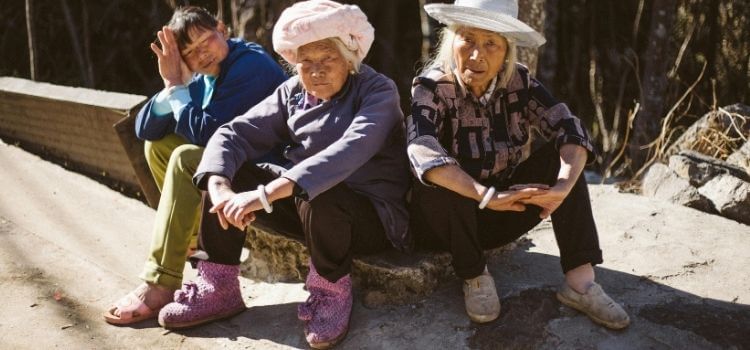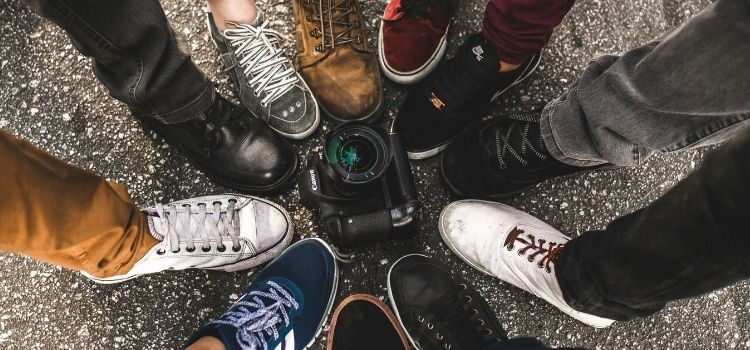As an Amazon Associate, I earn from qualifying purchases
As we age, maintaining balance and stability becomes increasingly crucial to prevent falls, which can lead to serious injuries among the elderly. One often overlooked aspect of fall prevention is the footwear worn by seniors. In this article, we’ll delve into the significance of selecting the right shoes for the elderly to mitigate the risk of falls.
Factors to Consider When Choosing Shoes for the Elderly

1. Comfort and Fit
Comfort should be a top priority when selecting shoes for the elderly. Ill-fitting shoes can cause discomfort and increase the likelihood of falls.
2. Stability and Support
Shoes with adequate stability and support are essential for seniors, as they help maintain balance and prevent tripping.
3. Slip Resistance
Slip-resistant soles are crucial to prevent slips and falls, especially on smooth or slippery surfaces.
4. Effortless Donning and Doffing: Redefining Convenience
Elderly individuals may have difficulty bending or reaching to put on shoes. Opting for shoes with easy closures, such as Velcro or elastic, can make the process simpler.
Types of Shoes Recommended for the Elderly

1. Orthopedic Shoes
Orthopedic shoes are designed to provide optimal support and alignment for the feet, making them an excellent choice for elderly individuals with foot conditions or mobility issues.
2. Shoes with Non-Slip Soles
Shoes featuring non-slip soles offer enhanced traction, reducing the risk of slipping on various surfaces.
3. Velcro or Elastic Closure Shoes
Shoes with Velcro or elastic closures are convenient for seniors who may struggle with tying shoelaces or fastening buckles.
4. Shoes with Adjustable Straps
Adjustable straps allow for a customizable fit, accommodating changes in foot size or shape due to swelling or other factors.
5. Lightweight Shoes with Cushioning
Lightweight shoes with ample cushioning provide comfort without adding unnecessary weight, promoting ease of movement for elderly individuals.
Features to Look for in Elderly-Friendly Shoes

1. Wide Toe Box
A wide toe box provides ample room for the toes to spread out, reducing pressure and discomfort.
2. Low Heels
Low-heeled shoes offer stability and minimize the risk of tripping or losing balance.
3. Padded Insoles
Padded insoles absorb shock and provide cushioning, enhancing comfort and reducing strain on the feet.
4. Arch Support
Shoes with built-in arch support help maintain proper alignment and reduce the risk of foot fatigue and pain.
5. Breathable Materials
Choosing shoes made from breathable materials helps prevent moisture buildup and reduces the risk of fungal infections.
Benefits of Investing in Quality Shoes for Elderly Individuals

Investing in quality shoes for the elderly offers numerous benefits:
- Reduced Risk of Falls and Injuries: Proper footwear can significantly decrease the likelihood of slips, trips, and falls, minimizing the risk of serious injuries.
- Increased Comfort and Mobility: Comfortable and supportive shoes improve overall mobility and encourage seniors to remain active.
- Improved Posture and Stability: Shoes designed for stability and support promote proper posture and balance, reducing the risk of falls caused by poor alignment.
Tips for Proper Shoe Maintenance and Care
To prolong the lifespan of elderly-friendly shoes and ensure continued effectiveness:
- Regular Cleaning and Inspection: Clean shoes regularly and inspect them for signs of wear or damage.
- Replacing Worn-Out Shoes: Replace shoes when they show signs of significant wear, as worn-out footwear can compromise stability and support.
- Storing Shoes Properly: Store shoes in a dry, well-ventilated area to prevent moisture buildup and maintain their condition.
Conclusion
Choosing the right shoes for the elderly is essential for fall prevention and overall well-being. By prioritizing comfort, support, and safety features, seniors can significantly reduce the risk of falls and enjoy greater mobility and independence in their daily lives.
FAQs (Frequently Asked Questions)
Non-slip soles provide traction and grip, reducing the risk of slips and falls, especially on slippery surfaces.
Yes, some regular shoes can be modified with inserts or orthotic devices to address individual foot conditions and provide the necessary support.
It’s recommended to replace shoes regularly, especially if they show signs of wear or no longer provide adequate support, typically every 6-12 months.
Yes, several shoe brands specialize in designing footwear specifically tailored to the needs of the elderly, offering features such as extra support, cushioning, and stability.
Yes, ill-fitting or unsupportive shoes can worsen existing foot problems, leading to discomfort, pain, and an increased risk of falls and injuries.
As an Amazon Associate, I earn from qualifying purchases

Leave a Reply